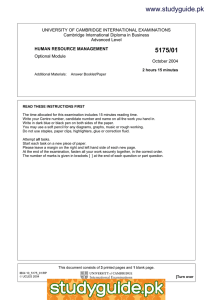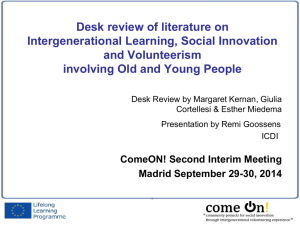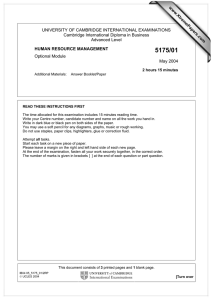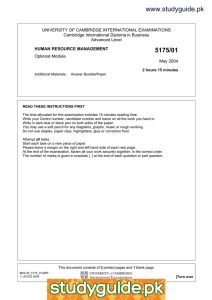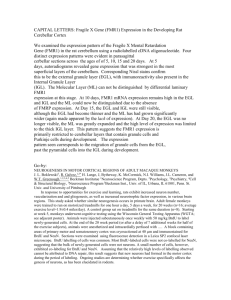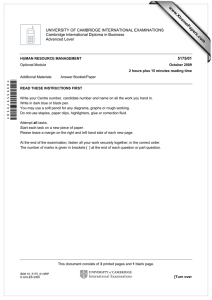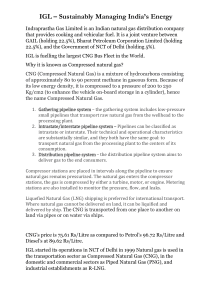www.XtremePapers.com
advertisement
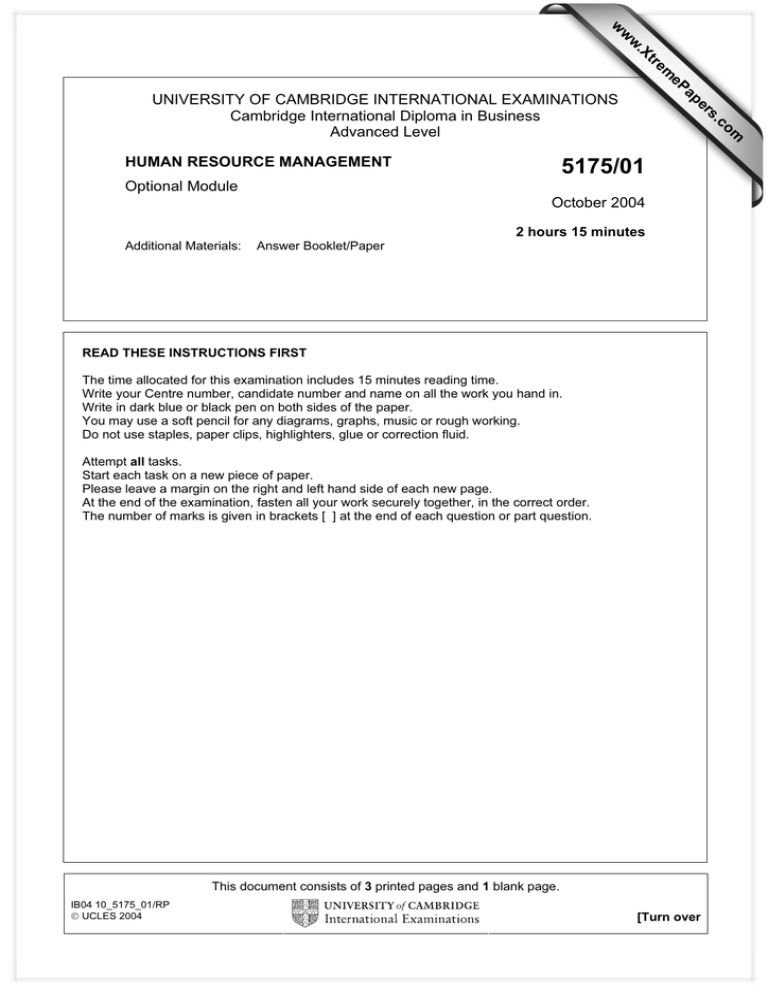
w w ap eP m e tr .X w om .c s er UNIVERSITY OF CAMBRIDGE INTERNATIONAL EXAMINATIONS Cambridge International Diploma in Business Advanced Level 5175/01 HUMAN RESOURCE MANAGEMENT Optional Module October 2004 2 hours 15 minutes Additional Materials: Answer Booklet/Paper READ THESE INSTRUCTIONS FIRST The time allocated for this examination includes 15 minutes reading time. Write your Centre number, candidate number and name on all the work you hand in. Write in dark blue or black pen on both sides of the paper. You may use a soft pencil for any diagrams, graphs, music or rough working. Do not use staples, paper clips, highlighters, glue or correction fluid. Attempt all tasks. Start each task on a new piece of paper. Please leave a margin on the right and left hand side of each new page. At the end of the examination, fasten all your work securely together, in the correct order. The number of marks is given in brackets [ ] at the end of each question or part question. This document consists of 3 printed pages and 1 blank page. IB04 10_5175_01/RP UCLES 2004 [Turn over 2 You must read the case study below and attempt ALL the tasks which follow. [The following case study is fictitious] International Garments Limited (IGL) International Garments Limited (IGL) manufactures ladies clothing and a small amount of mens clothing. It operates from a large factory in a relatively poor area which has high rates of unemployment, especially amongst semi-skilled females in the age range 16 – 25 years. The population generally has a higher level of education and more skills than other parts of the country, 5 but full time jobs are very difficult to find. In fact IGL is one of the main employers within the area. IGL produces clothes in a very traditional manner. Cloth is purchased and cut to specific patterns, a highly skilled job using cutting machinery. The material is then overlocked and machined into garments. The garments are finished with buttonholes, belt loops and buttons if required. These are tasks that most of the employees can adapt to with some training. The final processes are to press and examine the garments, place them in boxes and then pack them for shipment to Europe. 10 These final processes do not demand a high level of skills, and so many of the employees who carry out these functions are not on permanent full-time contracts, unlike the cutters, machinists and overlockers. The employees in the factory are predominantly female, with a few males employed for the limited production of men’s clothing. Whilst the workforce are all members of the same trade union, the 15 union is not very active in the factory. In fact the company does not follow any pay-related legislation and only observes basic Health and Safety laws. The Human Resource Management (HRM) section within the company has established a number of different systems of communication and ways in which any conflict can be dealt with. Each worker on a full-time contract has an annual appraisal. For each week every worker has a target 20 level of output that has to be achieved. If the full-time workers achieve their targets, they receive a bonus and the other workers receive nothing. However, if the targets are not achieved workers are frequently dismissed or made redundant. The same applies if their work is poor. Following a number of complaints IGL has recently become aware that the quality of some of it’s garments is poor. The directors have decided that this is because the skills of the employees do 25 not reach the required standard. As a result they have instructed the HRM department to dismiss all of the employees, other than those on a full-time contract. The HRM department has been blamed for this problem, with the directors claiming that they have not employed the right people and are not motivating them in an appropriate way. The directors have decided that they will take control of the HRM function of the company 30 themselves and recruit replacements with the right skills and attitudes. They have also decided that they will introduce new payment and reward systems for any employee who can produce high quality garments at a reasonable speed. All of the new workers will be trained for their particular part of the process, and only when they are fully trained will they be allowed to produce garments 35 for the customers. The directors believe that this is the only way to protect the reputation of the company and therefore its future. UCLES 2004 5175/O/04 3 You must attempt all of the following tasks. 1 (a) Explain the meaning of Human Resource Management and how it has developed into its current form. [10] (b) Describe how the approach to the management of human resources changed at IGL. [10] [Total: 20] 2 (a) Describe the significance of the main features of the local labour market for IGL. [10] (b) Explain the significance of IGL ignoring pay related and employment protection legislation. [10] [Total: 20] 3 (a) Describe the different types of employment contract that IGL might use, giving the reasons for each one. [10] (b) Evaluate the different options that IGL might use to end a contract of employment. 4 [10] [Total: 20] (a) Describe two systems that IGL could put into place to improve communication and one system to improve conflict resolution. [10] (b) Describe three other ways that IGL might monitor and measure the performance of its staff. [10] [Total: 20] 5 (a) Suggest how IGL might alter its present payment and reward system in order to motivate its workers. [10] (b) Produce a step-by-step training plan for the new employees of IGL. UCLES 2004 5175/O/04 [10] [Total: 20] 4 BLANK PAGE University of Cambridge International Examinations is part of the University of Cambridge Local Examinations Syndicate (UCLES), which is itself a department of the University of Cambridge. 5175/O/04
